Sony A7C II vs ZV-E1: Both are good at video, and they cost about the same, so which is best?
Our Sony A7C II vs ZV-E1 comparison finds out
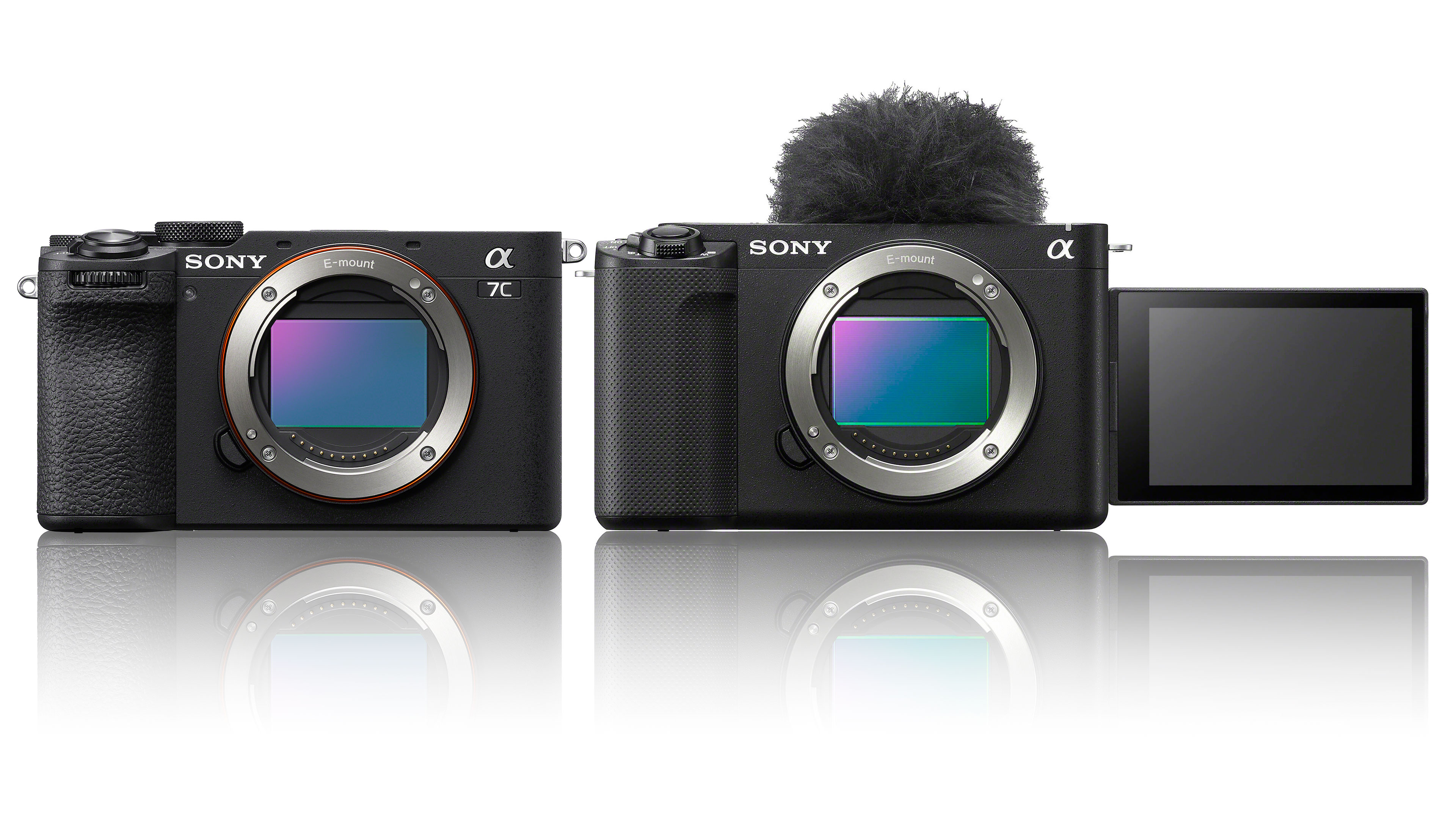
The Sony A7C II is a big upgrade over the original Sony A7C, with a higher resolution sensor, better video features, an extra control dial and more. But it costs about the same as the Sony ZV-E1 vlogging camera, which has even better video capabilities – so which one should you buy?
The best Sony cameras include some of the best cameras for filmmaking, the best vlogging cameras and even the best cinema cameras, but as the range gets bigger and bigger, the crossover between cameras increases and making a decision about which is best for you becomes harder. But if you’re looking for the best hybrid camera – a camera equally good at both stills photography and video – the answer might well be different.
The Sony mirrorless camera family tree has enough branches and generations to tax even the most persistent genealogist. It means that you sometimes have different branches of the family competing for a similar audience at a similar price.
The Sony A7C II comes from the oldest family, the original Sony A7 series. It’s a fresh offspring with a newer, more compact body design, but internally it shares the same sensor and technologies as the Sony A7 IV, albeit developed a little further with a custom AI processor, for example. So effectively, it’s a hybrid camera original developed for stills and video capture, but with equal emphasis on both.
The Sony ZV-E1 comes from a different line. It’s part of Sony’s growing ZV line-up, a set of stripped-down vlogging focused cameras that borrow technologies from other Sony camera lines but target vloggers specifically. The ZV-E1 is a descendant (cousin?) of the mighty Sony A7S III, whose tech has also found its way into the FX3 and FX6 cinema cameras.
The ZV-E1 is the cheapest Sony camera yet to feature the A7S III/FX3/FX6 sensor and capture technologies, and this has pitched it right up against the Sony A7C II.
This means that if you’ve got around $2,000 / £2,000 to spend on a full frame Sony vlogging camera, you’ve got a choice of two models which have arrived at this point from different directions. So which one should you choose?
Sony A7C II vs ZV-E1 in 2025
Why you can trust Digital Camera World
1. Sensor
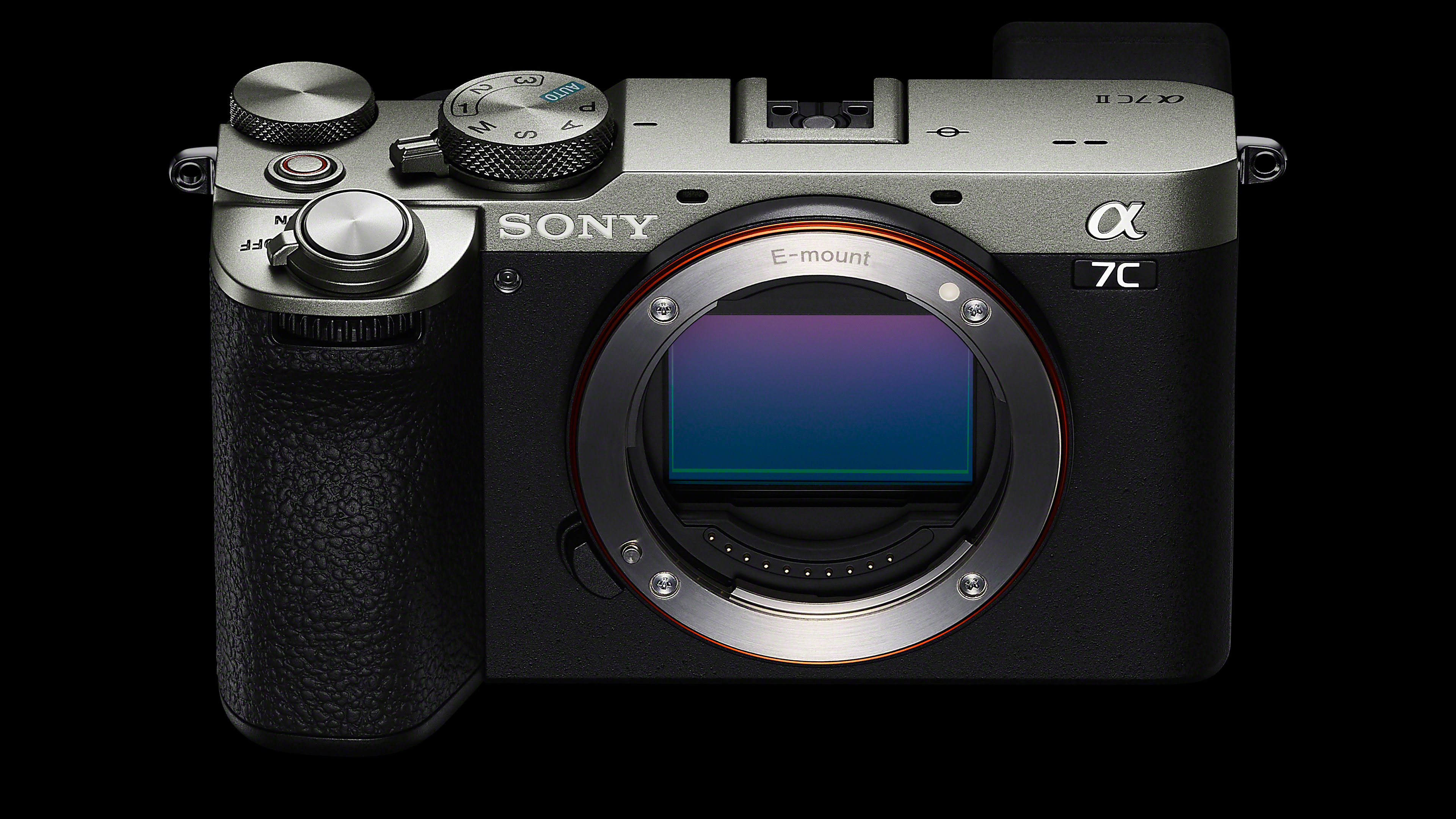
• Sony A7C II: 33MP full frame Exmor R CMOS, BIONZ XR
• Sony ZV-E1: 12.1MP full frame Exmor R CMOS, BIONZ XR
The sensors in these cameras could hardly be more different. They both have a full frame Sony Exmor R CMOS sensor with BIONZ XR processor, but there the similarity ends. The 33MP sensor in the A7C II makes it a great hybrid camera capable of high-quality stills and video, but the 12MP sensor in the ZV-E1 is definitely designed for video first, with higher sensitivities and faster frame rates for 4K video.
2. ISO range
• Sony A7C II: 100-51200, exp 50-204800
• Sony ZV-E1: 80-102400, exp 40-409600
Lower resolution sensors have larger photosites with higher sensitivity, and that’s the pattern we see repeated with the Sony A7C II and ZV-E1. The 12MP ZV-E1 goes a whole stop higher in maximum sensitivity both in its standard and extended ISO ranges, and it’s likely you’ll see noticeably higher quality capture in low-light shooting.
3. Autofocus
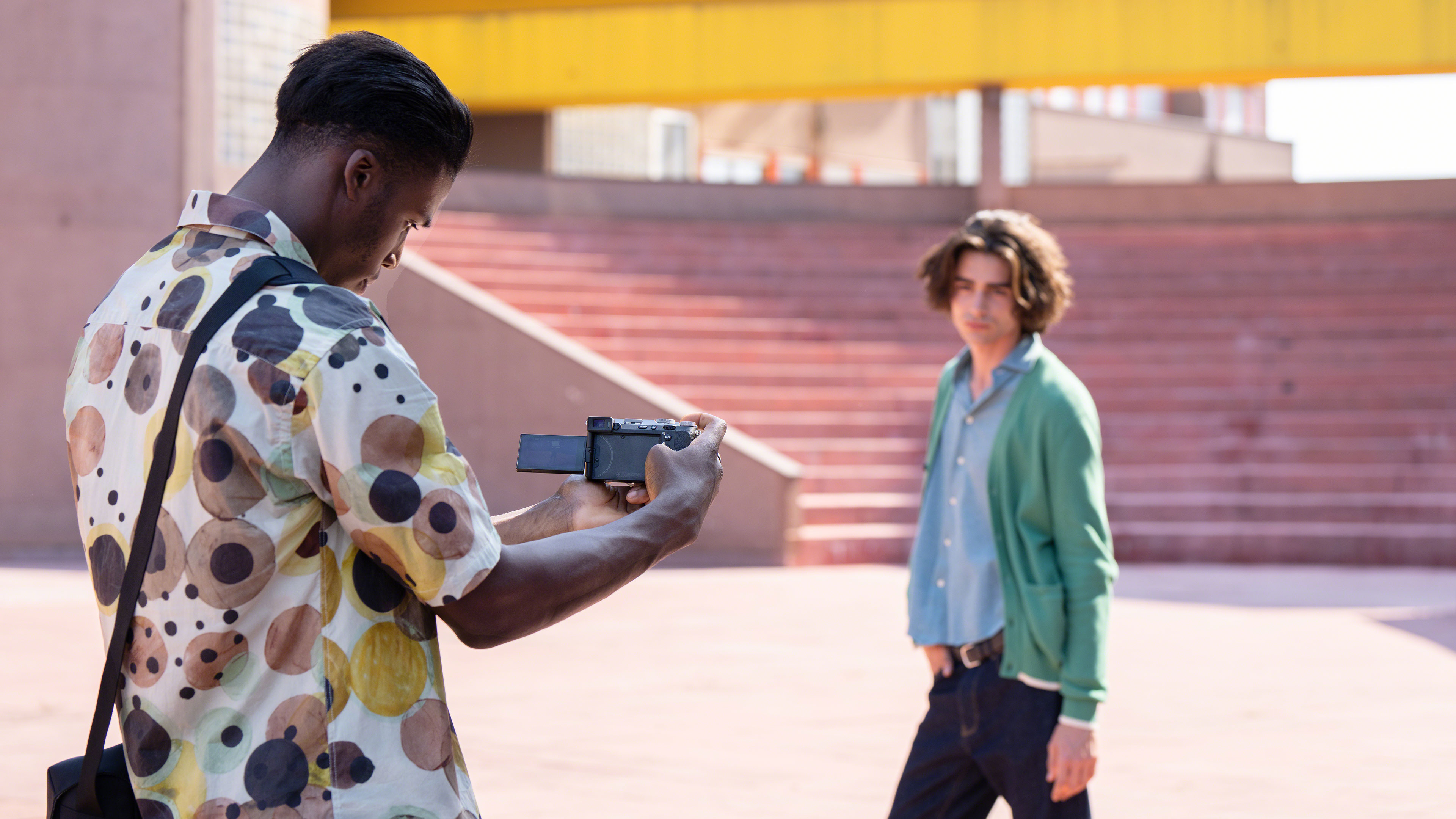
• Sony A7C II: 759 phase detect AF points,AI processing unit, human pose estimation, animal, bird, insect, car/train and airplane14 recognition, Real Time Tracking, Breathing Compensation
• Sony ZV-E1: 759 phase detect AF points,AI processing unit, human pose estimation, animal, bird, insect, car/train and airplane14 recognition, Real Time Tracking, Breathing Compensation
The Sony A7C II and ZV-E1 both benefit from Sony’s latest AF technologies, sharing the same 759-point hybrid AF system with dedicated AI processor offering human pose estimation, human, animal/bird, insect, car/train and airplane recognition. Both cameras also offer Focus Breathing compensation with compatible lenses.
4. Stabilization
• Sony A7C II: 5-axis IBIS, 7 stops, Active Mode
• Sony ZV-E1: 5-axis IBIS, 5 stops, Dynamic Active mode, Framing Stabiliser maintains subject position using Dynamic Active mode and AI subject recognition
There are differences in the in-body stabilization systems. Both cameras have 5-axis IBIS, but in the A7C II this is rated at 7 stops of compensation versus 5 stops for the ZV-E1. The ZV-E1 does benefit from what Sony claims is a 30% more effective Dynamic Mode, and this ties in with a Framing Stabilizer option which uses AI subject recognition to keep your subject centered.
5. Video
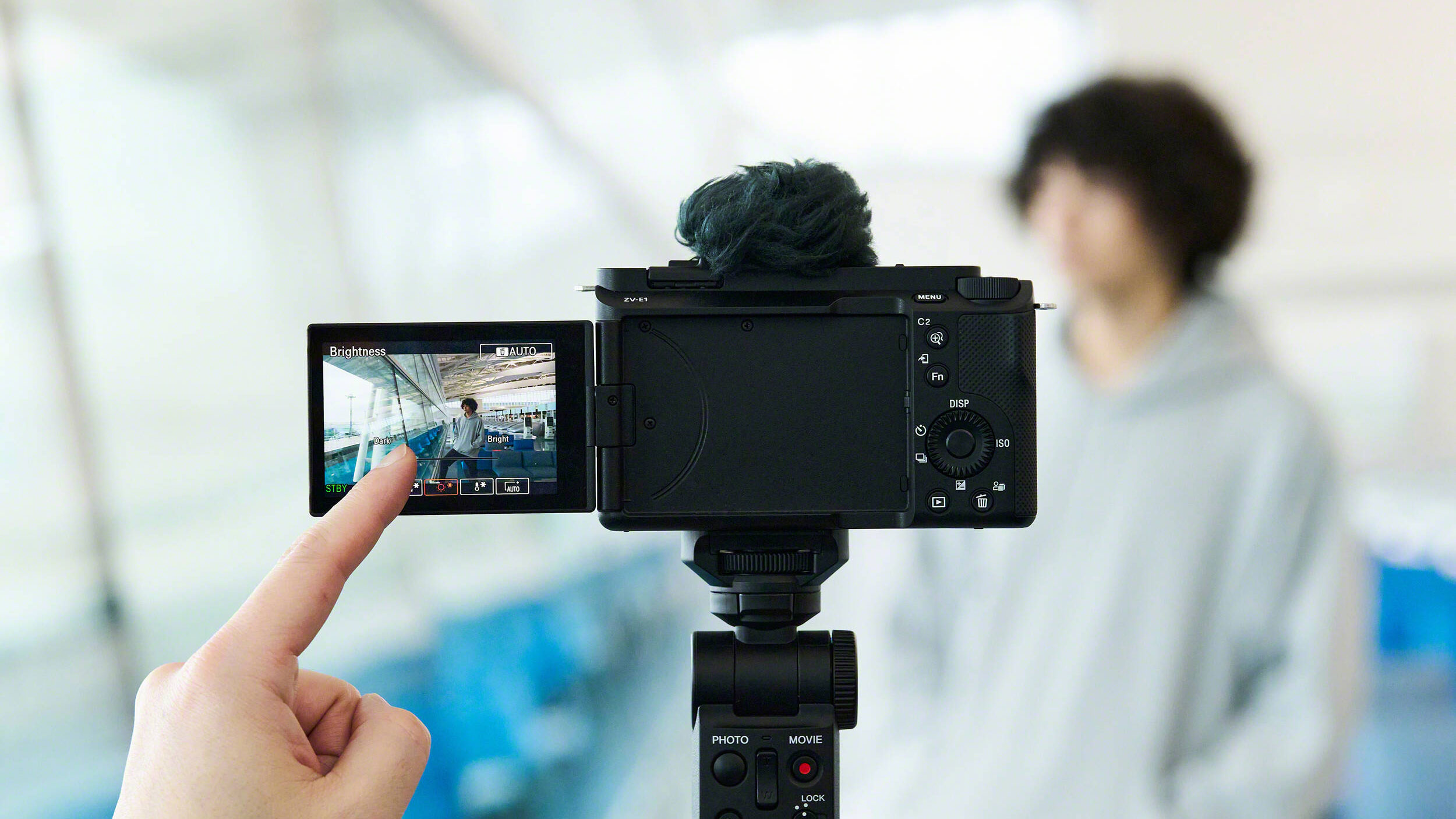
• Sony A7C II: 4K UHD 30p full width oversampled from 7K, 60p in Super35 mode, FHD 120p, 4:2:2 10-bit, Long GOP or All-I, S-Cinetone, S-Log3, custom LUTs, AI-based Auto Framing
• Sony ZV-E1: 4K UHD 60p full width, 120p via free license key upgrade, 4:2:2 10-bit, 15+ stops latitude, S-Cinetone, S-Log3, custom LUTs, Long GOP or All-I
Technically, the Sony A7C II and ZV-E1 can both shoot 4K 60p footage; the difference is that the A7C II can only do this in its cropped Super35 (APS-C size) mode. The ZV-E1 goes further, via a free software license upgrade which adds 4K 120p recording, though only with Long GOP compression. It seems an odd route compared to a regular firmware update, but this free license key also adds FHD 240p recording to the S&Q mode.
The ZV-E1’s 12MP resolution is actually an advantage for 4K capture since it doesn’t need to use the processor-intensive oversampling needed by the A7C II, which needs to resample 7K full width capture down to 4K video.
The ZV-E1 can also capture video in the extra-wide 2.35:1 Cinemascope format, though it actually captures 16:9 video with black bars top and bottom. It also has an ‘intelligent’ 3-capsule mic which can be set to front, rear, all directions or auto pickup patterns.
6. Stills
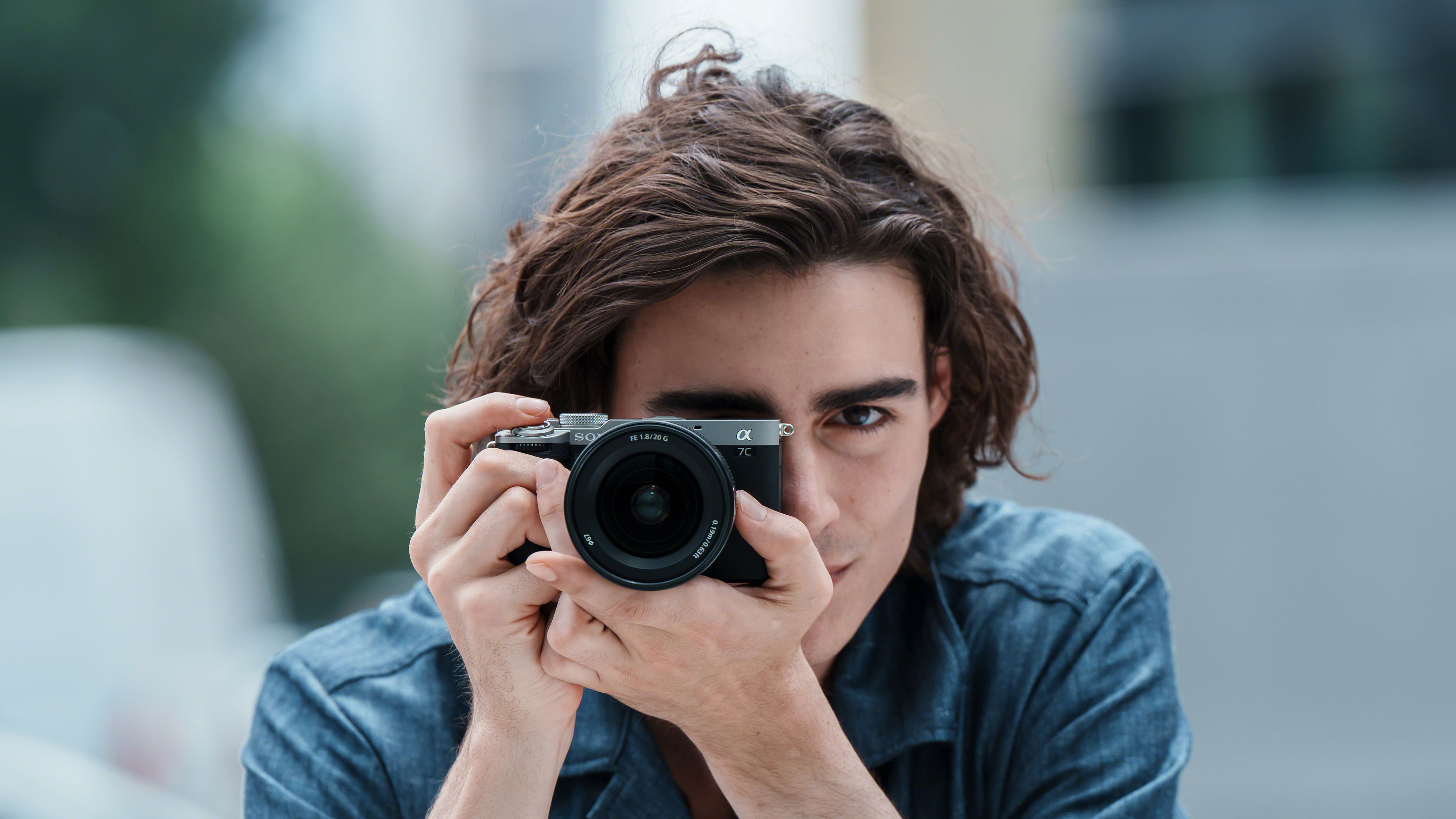
• Sony A7C II: 24MP
• Sony ZV-E1: 12MP
The Sony ZV-E1 may be a much stronger proposition for video and filmmaking, but its 12MP sensor severely restricts its usefulness for stills photography. It’s true that 12MP may still be fine for online use and digital display, but it’s not going to be as good for display prints or most commercial assignments.
This is where the Sony A7C II is miles ahead. This is a true hybrid camera which is as effective at capturing high-quality stills as it is good-quality video. The ZV-E1 is a specialized video/vlogging camera, but the A7C II is for both stills and video.
7. Continuous shooting
• Sony A7C II: 10fps, 8fps in live view mode, 1000+ JPEG, 44 raw
• Sony ZV-E1: 10fps (electronic shutter), 1000+ JPEG or raw
Both cameras can shoot at a frame rate of 10fps, which is pretty good for capturing sports and action, but while the ZV-E1 has a much larger raw buffer capacity for continuous shooting, it’s largely irrelevant because its low resolution and video-focused design effectively rule it out for this kind of work.
So although the Sony A7C II has a relatively modest raw buffer capacity, it’s still the only one of these two cameras you’d really consider for sports or action photography. The Sony ZV-E1 doesn’t even have a viewfinder.
8. Displays
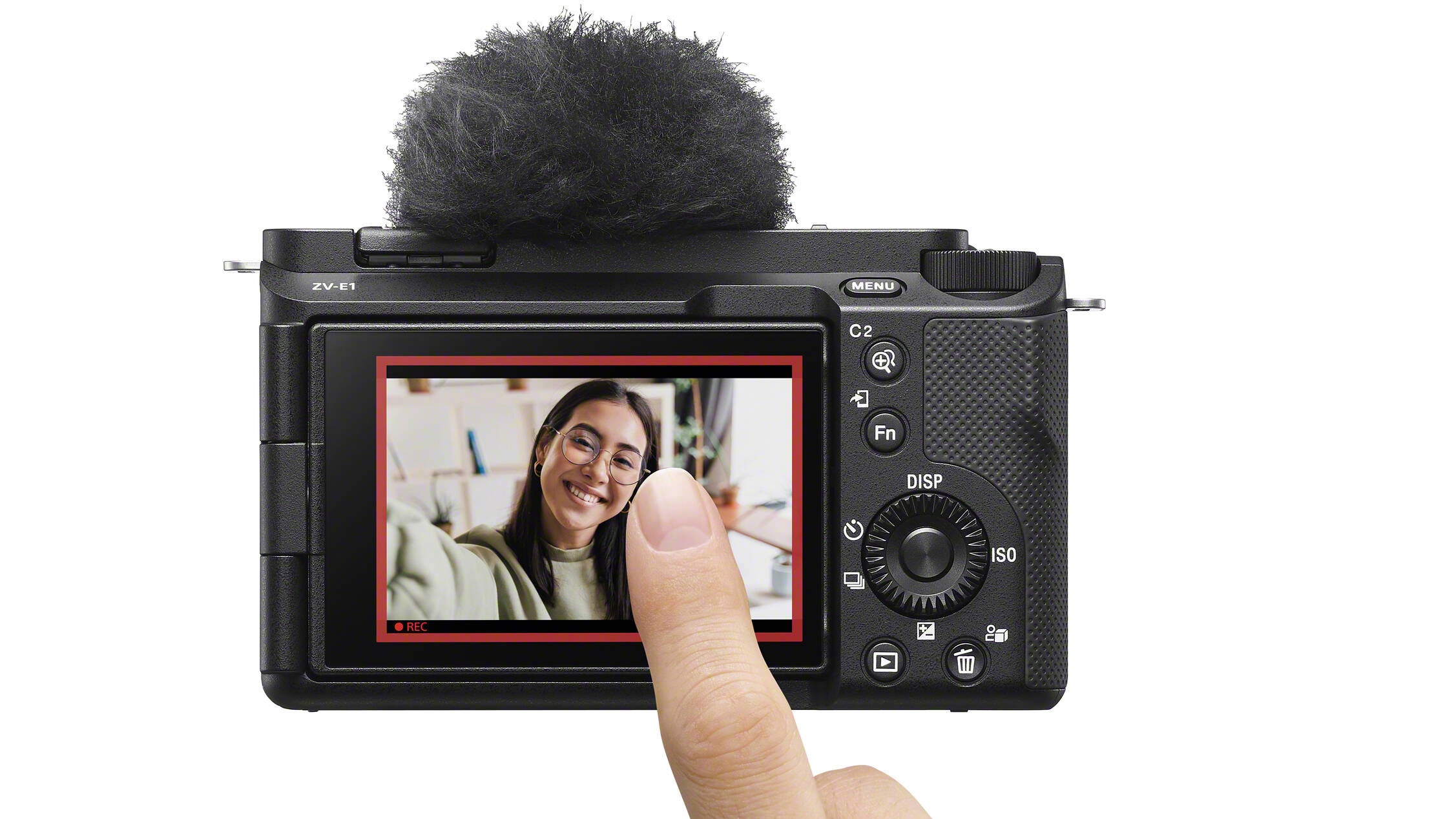
• Sony A7C II: 2.36m dot OLED EVF, 0.7x magnification, 3-inch vari-angle touchscreen, 1.037m dots
• Sony ZV-E1: No EVF, 3-inch vari-angle touchscreen, 1.037m dots
You’ll find the same 3-inch vari-angle touchscreen on the back of both cameras, with the same adequate (but only just) 1.037m dot resolution. The real difference is that the Sony A7C II has an EVF where the ZV-E1 doesn’t. Not having a viewfinder needn’t be a big handicap for video, which is mostly shot using the rear screen (or an external recorder), but for stills shooters an electronic viewfinder would be a must-have on a camera in this price bracket.
The lack of an EVF is another reason why the ZV-E1 is not an effective stills camera, even if the 12MP sensor wasn’t enough on its own.
9. Connectivity
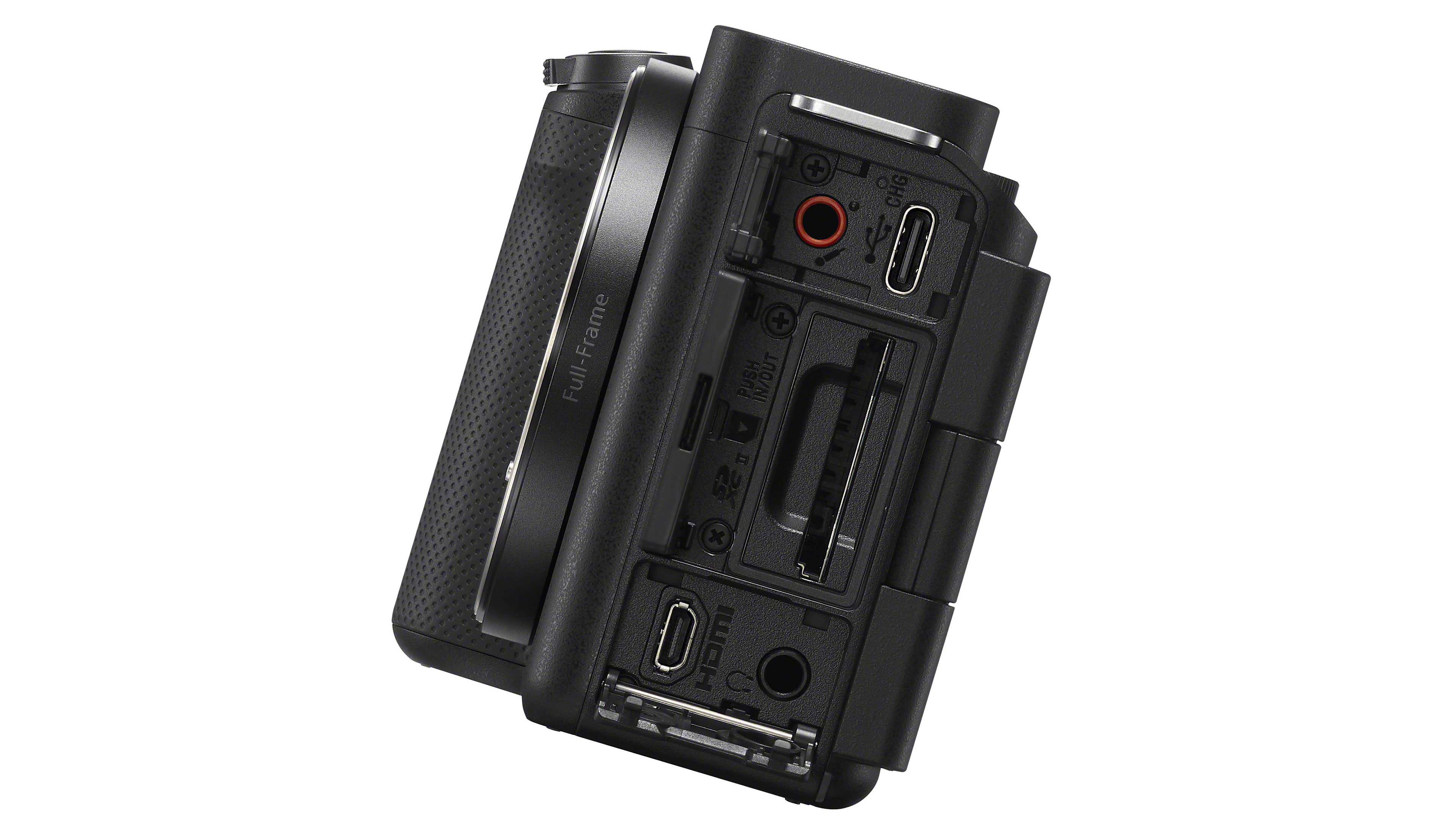
• Sony A7C II: USB Type-C, HDMI micro type D, MI interface, mic, headphone, Wi-fi, Bluetooth
• Sony ZV-E1: USB Type-C, HDMI micro type D, MI interface, mic, headphone, remote, Wi-Fi, Bluetooth
Both these cameras take video equally seriously, with Sony’s bespoke digital MI hotshoe interface, most likely to be used with the company’s own digital mics, HDMI output and both mic and headphone sockets. However, the HDMI socket on both cameras is the smaller ‘micro’ type D, which is less secure than full size HDMI, and while that’s common enough on a hybrid camera like the A7C II, it’s a bit disappointing on a serious video tool like the ZV-E1.
10. Storage
• Sony A7C II: 1x SD UHS II
• Sony ZV-E1: 1x SD UHS II
Here’s another point of similarity. Both cameras have a single SD UHS II card slot, so you can’t back up your video to a second card while you shoot and, in particular, the ZV-E1 doesn’t get the combined SD/CFexpress Type A slot found in more advanced Sony models, so that will throttle its top-end video capture capabilities somewhat. (Nevertheless, It’s still a more powerful video camera than the A7C II.)
11. Battery
• Sony A7C II: NP-FZ100, 530 shots (EVF), 560 shots (LCD)
• Sony ZV-E1: NP-FZ100, 570 shots
Another similarity – the Sony A7C II and ZV-E1 use the same long-lasting NP-FZ100 battery used across Sony’s mirrorless camera range. This gives good life expectancy in the context of mirrorless cameras generally, and while the ZV-E1 gets another 10 shots out of a single charge (on paper, at least), it’s such a small difference as to be insignificant.
12. Size and design
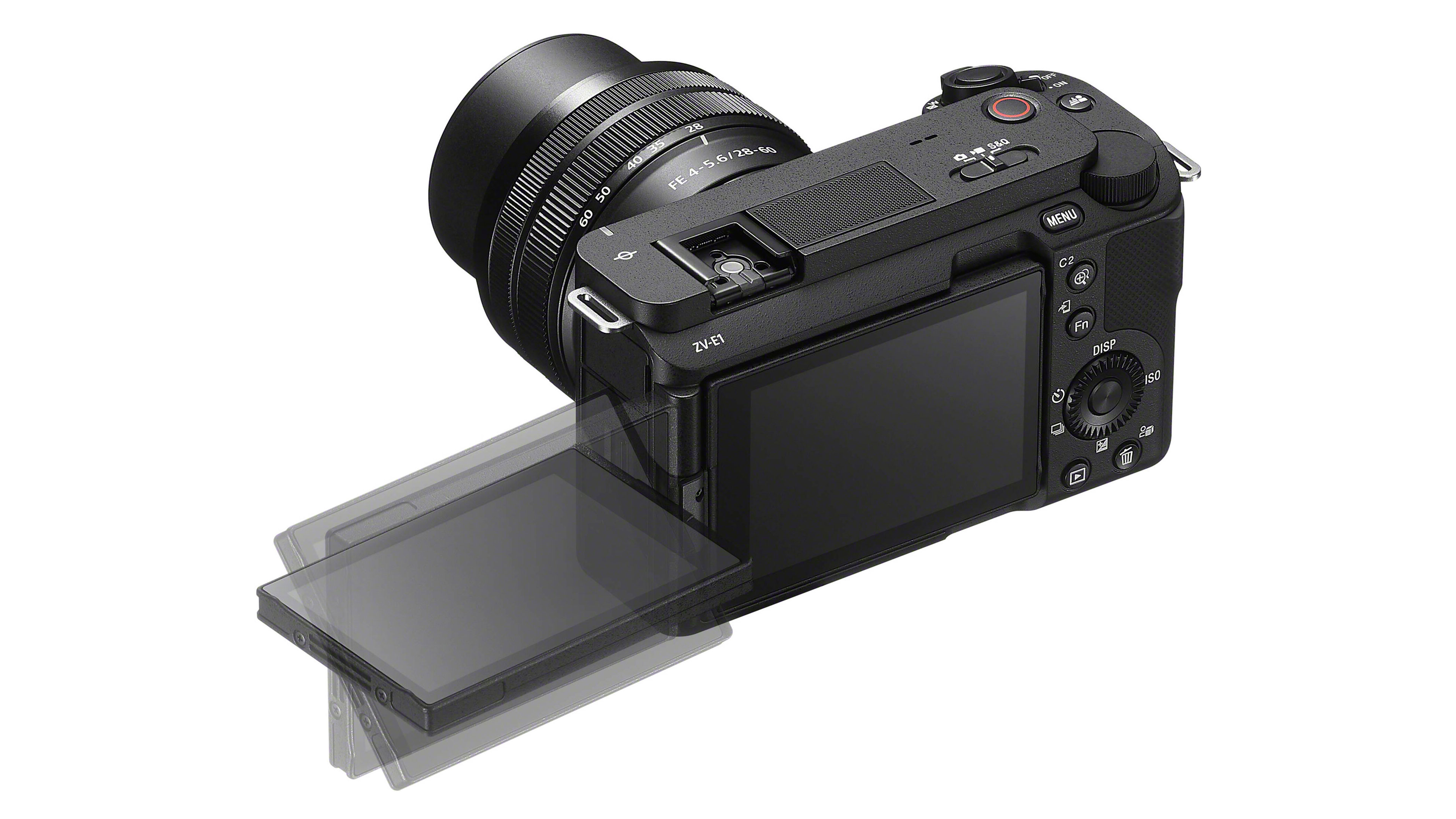
• Sony A7C II: 124.0 x 71.1 x 63.4mm, 429g
• Sony ZV-E1: 121.0 x 71.9 x 54.3mm, 483g
There are strong physical similarities between the Sony A7C II and ZV-E1. They share the same boxy ‘rangefinder’ design of the Sony A7C series and are very similar in size and weight.
However, while the controls on the rear are very similar, there are big differences elsewhere. The ZV-E1 does not have the viewfinder window of the A7C II on the back, and there is no mode dial on the top, just a sliding stills/video/S&Q switch as found on Sony’s other vlogging ZV-series cameras. (The A7C II has this too, but on a rotary switch under the mode dial.) The ZV-E1’s three-capsule mic is where the hotshoe is mounted on the A7C II, and the hotshoe/MI interface is shifted over to the left instead. The ZV-E1 also has a zoom lever for use with power zoom lenses.
The ZV-E1’s control layout has been optimized and simplified for vlogging use, while the A7C II is set up for both photographers and videographers.
Sony A7C II vs ZV-E1: Conclusions

• Sony A7C II: $2,198 / £2,099 body only
• Sony ZV-E1: $2,198 / £2,349 body only
What makes this Sony A7C II vs ZV-E1 comparison relevant is that Sony has made two full frame mirrorless cameras designed for vlogging that look practically the same and cost just about the same too. It’s true that the whole video/vlogging market is booming, but so is the market for hybrid stills/video cameras, which makes this comparison all the more significant.
The bottom line is that if you want to shoot both stills and video, the Sony A7C II is the obvious winner. Its video features aren’t quite on the same level as the ZV-E1’s but still good enough even for most kinds of professional use, at least in the vlogging market and influencer economy.
The ZV-E1 is certainly a more powerful camera for video capture, but its 12MP sensor and the lack of an EVF effectively rule it out for stills photography. The A7C II does stills and video pretty well, while the ZV-E1 does video even better but doesn’t really do stills at all. The ZV-E1 only makes sense if you are quite clear that you don’t need to capture stills.
Get the Digital Camera World Newsletter
The best camera deals, reviews, product advice, and unmissable photography news, direct to your inbox!

Rod is an independent photography journalist and editor, and a long-standing Digital Camera World contributor, having previously worked as DCW's Group Reviews editor. Before that he has been technique editor on N-Photo, Head of Testing for the photography division and Camera Channel editor on TechRadar, as well as contributing to many other publications. He has been writing about photography technique, photo editing and digital cameras since they first appeared, and before that began his career writing about film photography. He has used and reviewed practically every interchangeable lens camera launched in the past 20 years, from entry-level DSLRs to medium format cameras, together with lenses, tripods, gimbals, light meters, camera bags and more. Rod has his own camera gear blog at fotovolo.com but also writes about photo-editing applications and techniques at lifeafterphotoshop.com
